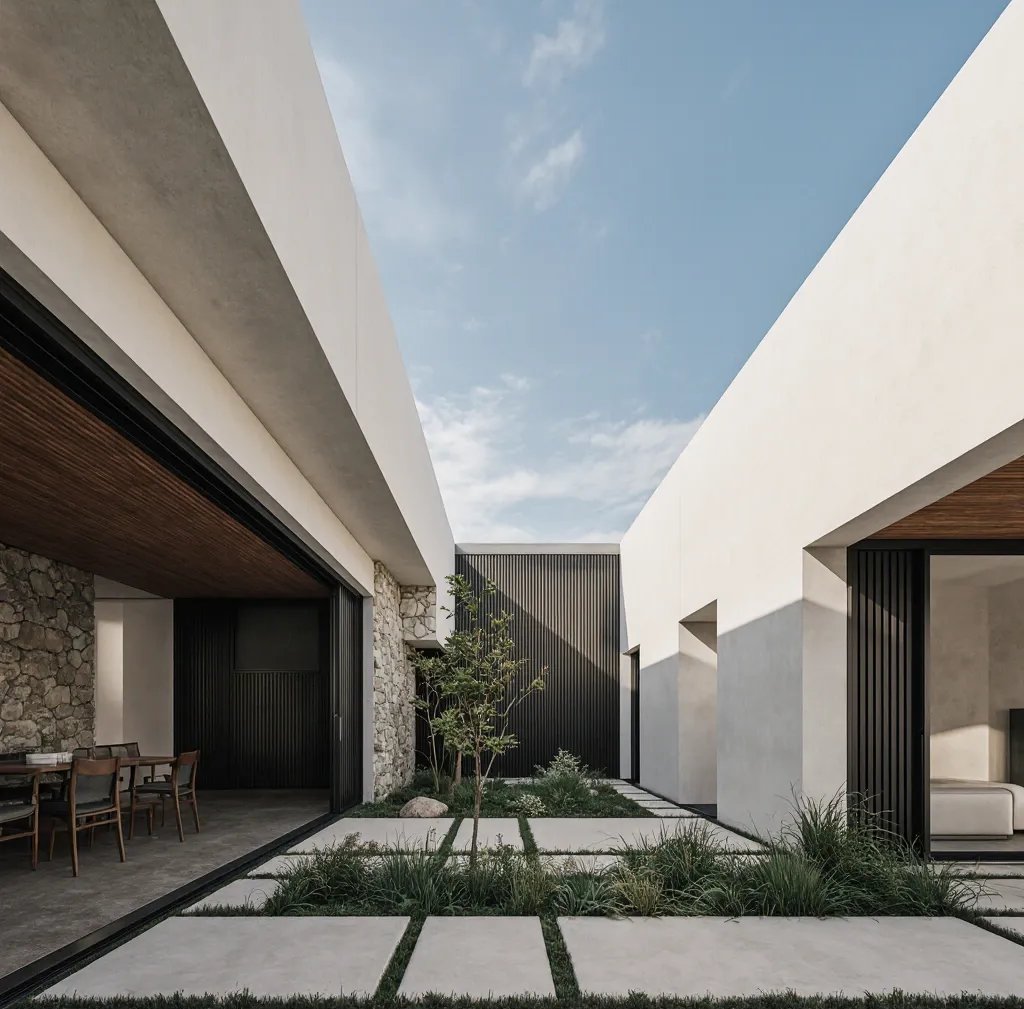Japandi Style: A Quiet Revolution in Premium Residential Design
Diving into Japandi for premium homes—this piece explores how clean massing, durable façades, and passive-climate strategies can be tailored to Brisbane’s subtropical context. You’ll find practical takeaways on roof profiles, courtyard integration, cladding choices and façade detailing, plus tips on validating designs without full-scale mockups. I’m keen to hear your experiences: what’s worked (or not) when blending minimalist form with functional comfort? Let’s connect and learn together.
6/25/20253 min read


In this article, I’m diving into Japandi style—a premium residential design approach blending Japanese minimalism with Scandinavian functionality. Through my ongoing research and learning journey, I’ll share practical insights on what makes a home authentically Japandi, why it’s gaining traction in Australia’s high-end market, and how you can apply its core principles to your next project. As an architect and continuous learner, I’m gathering data, case studies, and tried-and-tested advice to help us all transform spaces with clarity, comfort, and craftsmanship.
Core Features of Premium-Market Japandi
Material Integrity
Warm, Visible Timber: Wide-plank oak, walnut or ash floorboards; exposed joinery in low-sheen finishes; floating wood vanities.
Tactile Textures: Hand-wrought ceramics, raw stone benchtops, natural plaster walls—materials that show subtle variation over time.
Contrast of Finishes: Pair matte timber and plaster against soft-polished concrete or honed stone to create depth without fuss.
Spatial Simplicity
Minimal Open Plan: Clear sight-lines from entry through to courtyard or garden; one or two “moments” of separation—sliding screens, low walls.
Calm Proportions: Generous ceiling heights in primary living spaces, balanced by cozier bedrooms and reading nooks.
Light and Ventilation
Cross-Ventilation Strategies: Staggered openings on opposing facades; clerestory windows to draw warm air up and out.
Soft Daylight: Deep eaves or sliding timber screens that filter harsh sun, bathing interiors in a gentle, even glow.
Crafted Details
Refined Joinery: Concealed hardware, continuous grain runs, and soft-touch sliding screens.
Subtle Hardware: Brass or black-oxide pulls that patinate over time; recessed lighting that disappears into the ceiling.
Wabi-Sabi Meets Hygge
Embracing Imperfection: Slightly irregular tiles, handcrafted pottery, or reclaimed timber beams become focal points rather than flaws.
Cozy Moments: A low, deep sofa anchored by a wool rug; integrated window seats lined with cushions; softly glowing pendant lamps.
Practical Advice for Premium-Residential Application in Brisbane (Architectural Focus)
Adapting Japandi principles to the architectural envelope and external design is where premium residential projects gain real value. Here’s how to apply these strategies to structure, façades, and site integration:
Massing and Form
Simple Roof Profiles: Embrace low-pitched or skillion roofs with clean eaves lines to echo Japandi’s minimalist spirit and support natural rainwater runoff.
Courtyards and Light Wells: Carve internal courtyards or sunken light wells into the building footprint to bring natural light deep into the plan without relying solely on interior glazing.
Façade Material Palette
Durable Cladding: Select weather-resistant materials—fiber cement, charred timber (shou sugi ban), or natural stone—that require minimal upkeep and age gracefully under Brisbane’s UV exposure.
Neutral Tones: Use a muted base (e.g. off-white render or pale plaster) paired with dark timber battens or metal accents to create depth and contrast at the building’s exterior.
Indoor–Outdoor Integration
Transitional Thresholds: Specify recessed sliding or folding doors that disappear into pockets, connecting living pavilions to landscaped courtyards or verandas.
Deep Eaves and Pergolas: Design generous overhangs and timber pergolas to provide shaded outdoor rooms, blurring the line between inside and out.
Passive Climate Strategies
Cross-Ventilation Channels: Plan opposing openings at high and low levels—louvred clerestories above sliding doors and ground-level vents—to drive airflow through habitable zones.
Thermal Mass: Integrate exposed concrete or masonry walls on shaded façades to absorb heat during the day and release it in cooler evening hours, stabilising internal temperatures.
External Detailing
Concealed Drainage and Gutters: Design gutters, downpipes, and flashings hidden within eaves or integrated into façade joints to maintain minimal lines.
Shadow Lines and Recesses: Introduce narrow reveal joints around windows and door frames to create crisp shadow lines that articulate the façade subtly.
Validation through Site and Model
Solar and Wind Studies: Run sun path and prevailing wind simulations in early design phases to validate orientation, eave depths, and façade permeability without full-scale mock-ups.
3D Massing Models: Develop physical or digital massing models to preview how building volumes interact with landscape, light, and neighbouring structures across seasons.
Conclusion
Moving forward, I plan to incorporate more of these Japandi architectural features into my premium residential projects here in Brisbane. Embracing clean massing, durable yet refined materials, and passive climate strategies aligns with both the subtropical context and our clients’ desire for timeless, mindful design. As I explore these principles, I look forward to refining my methods, collaborating with local artisans, and sharing lessons learned with the community.
Further Reading & Resources
James Hardie Japandi Design Handbook 2025
James Hardie Modern Homes Forecast 2025
Brighton Japandi Estate Project Overview
Urban Abode Design – Naya Haus, Cairns
Steph & Gian Ottavio Case Studies
If you’re interested in exploring Japandi architecture for your next premium residential project, we’d love to hear from you. Get in touch below to discuss how we can bring these thoughtful, climate-responsive design principles to life in your home or development.
© Wigwam Architects
Wigwam Architects Pty Ltd ATF Wigwam Trust ABN 77 283 233 729
Wigwam Architects respectfully acknowledges the Quandamooka people as the Traditional Custodians of the land on which we live and work. We honor their enduring connection to Country, community, and culture and recognize their deep knowledge and care for this land and its waterways. We pay our respects to Elders past, present, and emerging and extend that respect to all Aboriginal and Torres Strait Islander peoples today.


